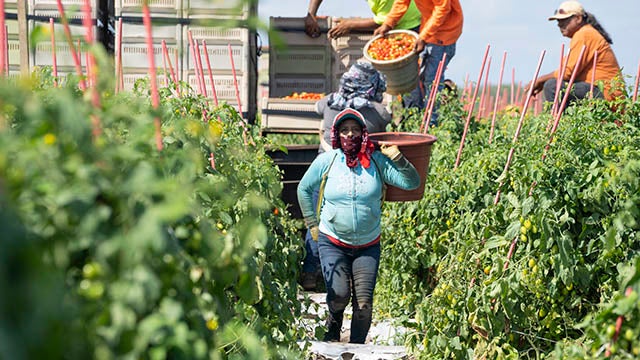The first months of this year brought the second global food price crisis in just three years, with soaring food prices against a backdrop of bad weather, poor harvests, and political turmoil in North Africa and the Middle East. This year will see another milestone: the planet’s population is set to surpass seven billion, with most of the population growth occurring in countries least equipped to meet rising demands on agriculture and the environment. As part of its 7 Billion: Conversations that Matter roundtable series, the Aspen Institute’s Global Health and Development program brought together three experts to discuss “The Revolution We Need in Food Security and Population.”
Dan Glickman, executive director of the Aspen Institute Congressional Program and former US Secretary of Agriculture, noted that one out of every seven people worldwide already go hungry. The pressures on the food supply will only increase with world demand, which is expected to double in the first half of the 21st century due to structural factors such as changing diets from rising incomes and growth in population.
Echoing his recent op-ed in the Daily Caller, Glickman underscored that volatility in the price of food commodities and the resulting food insecurity create conditions ripe for political instability — as was manifested by food riots in 30 countries during the previous food crisis (2007-2008) and the role of anger at high food prices in the recent upheavals in Egypt and Tunisia. Because of the issue’s profound implications for public health, human rights, and global security, he explained, the US has revamped its efforts “to rebuild food self-sufficiency in the developing world,” primarily through its new Feed the Future initiative.
National Geographic’s executive editor Dennis Dimick emphasized the need to look at issues such as food insecurity, population growth, land and water scarcity, and climate change in an integrated fashion. Highlighting National Geographic’s current “7 Billion” series — which includes an upcoming issue on food security — Dimick noted that “seven billion is a useful way to begin having a conversation around humanity on the planet: our impact and our prospects.” Dimick emphasized the importance of global investments in research and technology innovations to safeguard biodiversity, stave off pests and plant disease, and boost production.
But there are other ways to take action. Though the population will continue to grow, all three speakers recognized that it is within our power to enable families to slow the rate of growth. Glickman pointed out that, depending on fertility rates in coming decades, we can expect population growth equivalent to “either two new Indias or two new Chinas in parts of the world that are already food insecure” by 2050. Both Dimick and Roger-Mark De Souza, vice president of research and director of the Climate Program at Population Action International (PAI), agreed on the importance of women’s reproductive choices in bolstering our prospects for sustainable development, including food security.
De Souza noted that key regions of the world with high population growth, projected agricultural decline, and low resilience to climate change also have high levels of unmet need for voluntary family planning. Currently, more than 215 million women around the world want to use family planning services but don’t have access to modern contraception — meeting this need would empower women to plan families at sizes they are able to support. As Dimick put it, “What it comes down to, essentially, is that the choices that girls and young women make and are allowed to make will determine the future of humanity on this planet.”
If experts agree that food security and population are inter-related, how can we address this? What is the revolution we need? While investments in agricultural development and reform of domestic agricultural policies will be necessary to attain food security in a growing world, a challenge as multi-faceted as global food security warrants an integrated policy approach incorporating the many dynamics that influence security, with particular policy attention directed at meeting the reproductive needs of women around the world. As we look at strategies to feed our growing population and at humanity’s impact and prospects over the coming half-century, what kind of innovations in policy and on the ground can help us combat food insecurity and hunger within our own country and around the world?
Our dialogue at the Aspen Institute last week saw the beginning of a conversation on these matters. In the discussions, the linkages between food security, agriculture-led growth, and reproductive health choices began to emerge. There were even hints at ways in which food security and reproductive health could reinforce one another, with productivity increases and rising incomes for smallholder farmers (most of whom are women) opening up new prospects for family reproductive health decision-making and increasing the education participation of girls, a critical factor in their own future family planning choices.
But if we are to more fully unearth the linkages and, more ambitiously, begin to unleash the virtuous circles on food security and population, there will have to be a conscious effort to broaden and deepen this conversation, which has barely begun.

